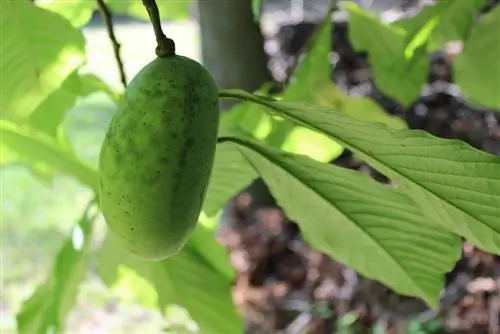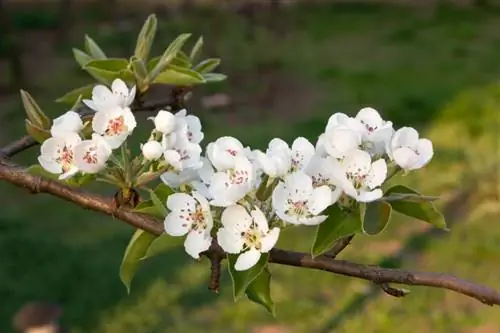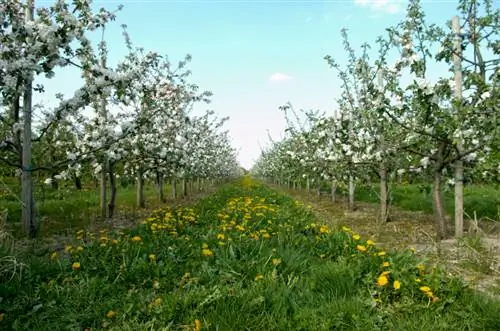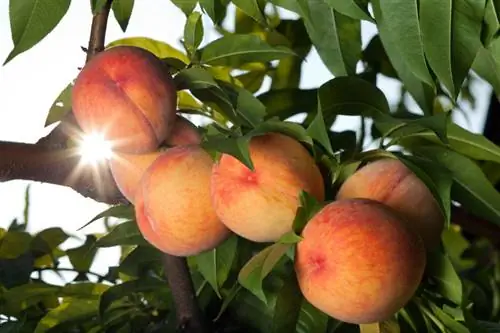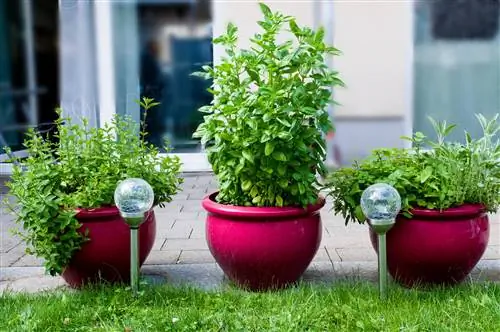- Author admin [email protected].
- Public 2023-12-16 16:46.
- Last modified 2025-01-23 11:22.
The beautiful crown of the Indian banana is not the only reason why this North American tree is also planted in home gardens here. Above all, he should give us his exotic-tasting fruits. In return, he wants to be supplied with plenty of nutrients from us.

How should you fertilize an Indian banana?
In order to optimally fertilize an Indian banana, you should first plant it in nutrient-rich soil, use long-term nitrogen-containing fertilizer such as compost, horn shavings or horse manure every year in the spring and ensure there is sufficient potassium supply during the flowering period. Calcareous soils should be avoided.
Life without fertilizer
This tree will be able to live for a long time without additional fertilizer. It can get its nutrients from the garden soil. But there these will inevitably become fewer and fewer over the years. This means that at some point the tree will not receive enough nutrients to fulfill all its tasks.
We will still be able to admire its attractive foliage, but the flowering output will decrease. As a result, the autumn harvest is also modest. If you want a large number of fruits, you must fertilize the tree specifically and regularly.
Plant in nutrient-rich soil
The tree should receive its first supply of nutrients when it is planted. To do this, the excavation is enriched with compost or another organic long-term fertilizer. This well cared for, it will root well and develop splendidly above ground.
Fertilize annually
The nutrient depot in the soil should be replenished regularly. But one fertilization per year is completely sufficient here. The best time for this is early spring, before the tree sprouts again.
Suitable fertilizer
The nutrient requirements of an Indian banana can be compared to the nutrient requirements of local pome fruit. A nitrogen-containing long-term fertilizer (€12.00 on Amazon) is suitable as it supplies the tree evenly with nutrients throughout the entire growing season. For example:
- Compost
- horn chips
- ripe horse manure
The fertilizer is applied around the root area and then carefully worked into the soil. Then please water well.
Tip
While the tree bears its flowers, ensure there is an adequate supply of potassium. This element promotes fruit setting.
Mulch layer
On sandy soils, a thick layer of mulch is also recommended. It prevents too much water from evaporating in summer. Because this layer is gradually decomposed by microorganisms, it also enriches the soil with nutrients.
Avoid lime
In its natural habitat, the Indian banana does not find any calcareous soil. Even if it can adapt well to high pH values over time, it is not uncommon for it to initially react with chlorosis.
A pH value between 5 and 7 is ideal. If the soil is calcareous, you could use rhododendron fertilizer to lower the pH value as a preventive measure.
Fertilize container specimens
Since only a limited amount of soil fits in a bucket, fertilization should be carried out in several courses. However, only during the main growing season. A liquid fertilizer is the better choice here.

